Hearts (suit)
Hearts (French: Cœur, German: Herz) is one of the four suits in playing cards of both the French deck and the German deck. However, the symbol is slightly different: ![]() in a French deck and
in a French deck and ![]() in a German-suited deck.
in a German-suited deck.

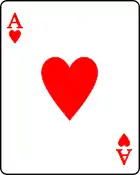

In Bridge, for which in Germany the French deck is common, it is called by its French name, Cœur. In games using German-suited cards the suit of Hearts is often called "Red" (Rot). In the game of Watten, the King of Hearts is the highest Trump. In Tiến Lên, Hearts are the highest-ranked suit.
This suit was invented in 15th century Germany and is a survivor from a large pool of experimental suit signs created to replace the Latin suits.[1]
In Swiss-suited cards, the equivalent suit is Roses, typically with the following suit symbol: ![]() .
.
Name
The origin of the term "heart" to describe the symbol, which only very marginally resembles a true heart, is not known.[2] In general, equivalents in other languages also mean "heart".
 The heart in German suited cards
The heart in German suited cards The heart in French suited cards
The heart in French suited cards
Characteristics
The heart typically has a form of cardioid, the lower part of which ends in a point. The symbol is drawn with its tip down, the two lobes of the cardioid pointing upwards. Generally, the hearts are coloured red.
French pattern
The following gallery shows the hearts of a 52-card deck of French playing cards. Not shown is the Knight of Hearts, used in tarot card games:
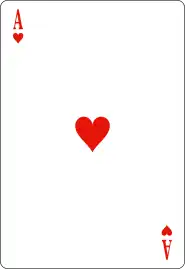
 2
2
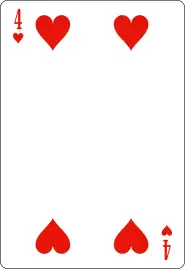
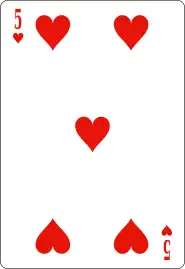
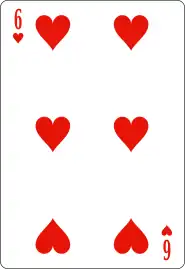

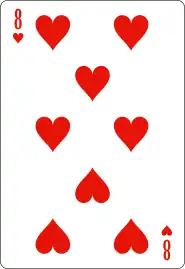

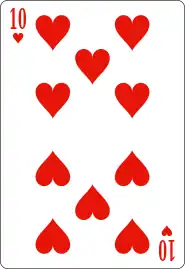
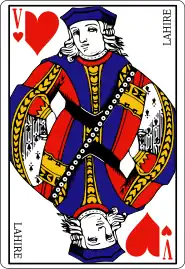

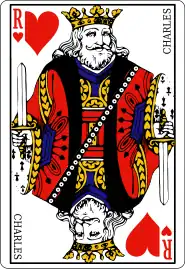
German pattern
The gallery below shows a suit of Hearts from a German suited deck of 32 cards. The pack is of the Saxonian pattern:
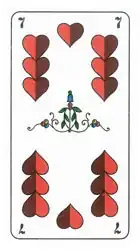 7
7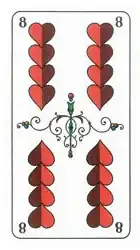 8
8 9
9 10
10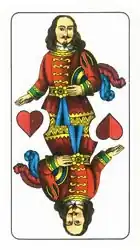
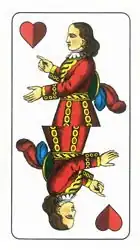
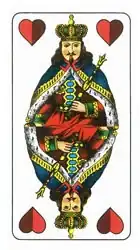

Coding
The symbol ♥ is already in the CP437 and therefore also in the WGL4. In Unicode, a black heart ♥ and a white ♡ heart are defined:
| Symbol | Unicode | Entity in HTML |
|---|---|---|
| ♥ | U+2665 BLACK HEART SUIT | ♥ or ♥ |
| ♡ | U+2661 WHITE HEART SUIT | ♡ |
| Example from Dingbats for one of the other forms of heart: | ||
| ❤ | U+2764 HEAVY BLACK HEART | ❤ |
See also
References
- Dummett, Michael (1980). The Game of Tarot. London: Duckworth. pp. 10–32.
- K. McDonell (13 February 2007). "The Shape of My Heart - Where did the ubiquitous Valentine's symbol come from?". Slate.